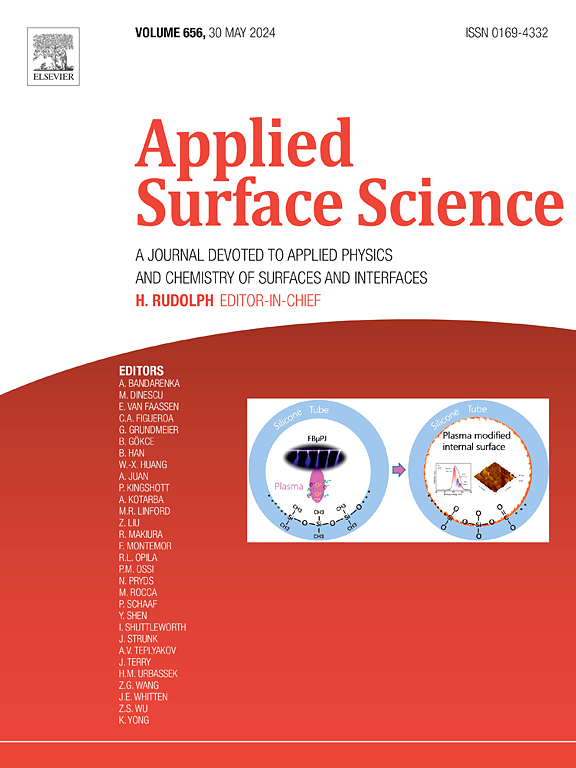Encapsulation of ZIF-8 within a triazine ion polymer using edge 2-methylimidazole directing effect for enhancing CO2 fixation into cyclic carbonates via synergistic catalysis
IF 6.3
2区 材料科学
Q2 CHEMISTRY, PHYSICAL
引用次数: 0
Abstract
Core-shell hybrid materials have attracted attention for CO2 capture and conversion because they overcome limitations such as low activity and poor stability of a single component. However, their synthesis is challenging because of complex conditions and required chemical structure customization between core–shell components. In this study, a series of core–shell structured metal–organic frameworks hybrid catalysts ZIF-8@IPs-x (x = 1, 2, 3, and 4) were synthesized by encapsulating ZIF-8 within a triazine ionomer polymer. Unlike previous methods that required specific functionalized directing groups (e.g., ![]() H2,
H2, ![]() OH, or
OH, or ![]() CHO) to form the core–shell structure, this approach utilized the incomplete coordination of 2-methylimidazole in ZIF-8 as a guiding agent, promoting the outer edge growth of the ionomer shell and achieving uniform encapsulation of ZIF-8. Significantly, the synergistic catalytic effects between the ZIF-8 core and the ionomer shell of the hybrid catalyst enabled efficient conversion of CO2 into various cyclic carbonates within 3 h, without the need for solvents or co-catalysts. Furthermore, this core–shell structured catalyst exhibited facile recovery and maintains its catalytic activity over five consecutive cycles.
CHO) to form the core–shell structure, this approach utilized the incomplete coordination of 2-methylimidazole in ZIF-8 as a guiding agent, promoting the outer edge growth of the ionomer shell and achieving uniform encapsulation of ZIF-8. Significantly, the synergistic catalytic effects between the ZIF-8 core and the ionomer shell of the hybrid catalyst enabled efficient conversion of CO2 into various cyclic carbonates within 3 h, without the need for solvents or co-catalysts. Furthermore, this core–shell structured catalyst exhibited facile recovery and maintains its catalytic activity over five consecutive cycles.


利用2-甲基咪唑的定向效应将ZIF-8包封在三嗪离子聚合物中,通过协同催化增强CO2对环碳酸盐的固定
核壳杂化材料克服了单一组分活性低、稳定性差等缺点,在二氧化碳捕获和转化方面受到了广泛的关注。然而,由于复杂的条件和需要在核壳组分之间定制化学结构,它们的合成具有挑战性。在本研究中,通过将ZIF-8包封在三嗪离子聚合物中,合成了一系列核壳结构的金属-有机框架杂化催化剂ZIF-8@IPs-x (x = 1,2,3和4)。与以往需要特定功能化导向基团(如H2、OH或CHO)形成核壳结构的方法不同,该方法利用ZIF-8中2-甲基咪唑的不完全配位作为导向剂,促进离聚体外壳的外缘生长,实现ZIF-8的均匀包封。值得注意的是,ZIF-8核与杂化催化剂的离聚体壳之间的协同催化作用使CO2在3 h内有效地转化为各种环状碳酸盐,而不需要溶剂或辅助催化剂。此外,该核壳结构催化剂表现出易于恢复,并在连续五个循环中保持其催化活性。
本文章由计算机程序翻译,如有差异,请以英文原文为准。
求助全文
约1分钟内获得全文
求助全文
来源期刊

Applied Surface Science
工程技术-材料科学:膜
CiteScore
12.50
自引率
7.50%
发文量
3393
审稿时长
67 days
期刊介绍:
Applied Surface Science covers topics contributing to a better understanding of surfaces, interfaces, nanostructures and their applications. The journal is concerned with scientific research on the atomic and molecular level of material properties determined with specific surface analytical techniques and/or computational methods, as well as the processing of such structures.
 求助内容:
求助内容: 应助结果提醒方式:
应助结果提醒方式:


